Author Archive
Visual Evidence in Jacksonian America
David Jaffee, Bard Graduate Center for Studies in the Decorative Arts, Design, and Culture
When teaching about Jacksonian America, certainly one topic that comes to mind as critical is the market revolution. This short essay examines the visual evidence for the market revolution by examining family portraits, including folk portraiture, landscape paintings, and political cartoons. Professor Jaffee suggests ways to combine text and images in order to utilize images in teaching not as mere illustrations but rather as objects that constitute historical meaning.
Picturing Colonial America
Peter C. Mancall, University of Southern California
This essay provides a brief chronological overview of the visual evidence available for teaching about the British colonies in North America. Mancall provides information on some of the first European images of America from the 1590s that were crucial for Britain’s colonizing mission, the depictions of the Pequot War, and the drawings that addressed the political crisis of the 1760s.
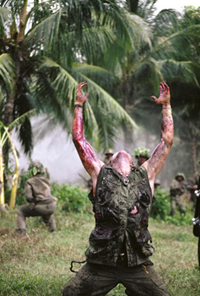
American Soldiers as Victims in Vietnam
David Parsons, The Graduate Center, City University of New York
David Parsons uses Arthur Greenspon’s 1968 photograph of a U.S. Army paratrooper in Vietnam to explore the different versions of history that have been presented to the public since 1968.
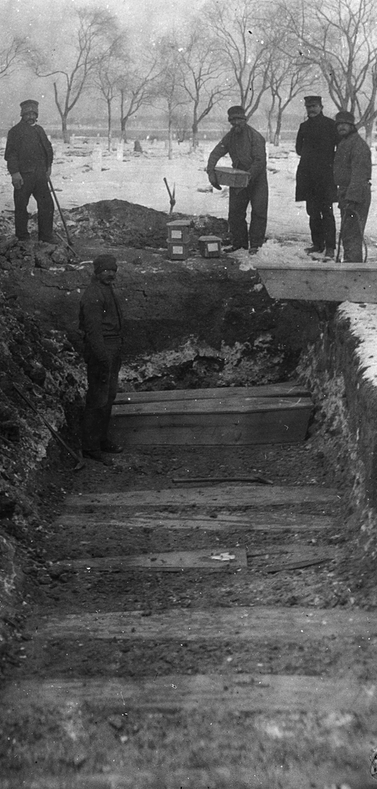
Riis Redux: Seeing the Light
Vincent DiGirolamo, Baruch College, City University of New York
Jacob A. Riis’ photographs of New York’s lower east side at the turn of the twentieth century have become iconic images of immigrant poverty. Historian Vincent DiGirolamo uses them to teach students to look and think harder about photography as a tool of social reform.
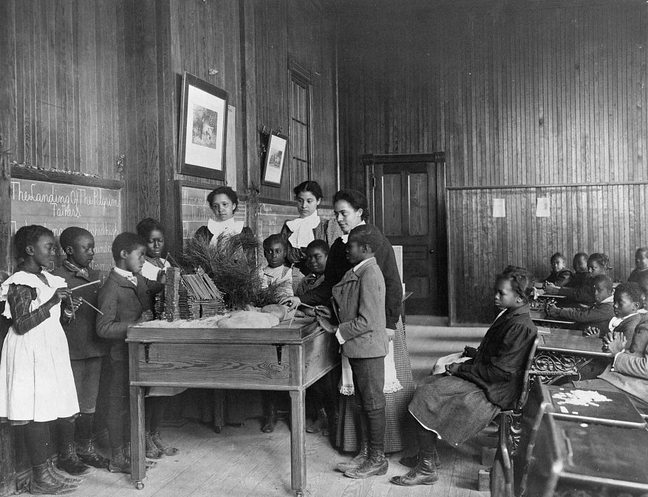
Imaging Americans
Shawn Michelle Smith, School of the Art Institute of Chicago
Shawn Michelle Smith discusses Frances Benjamin Johnston’s photograph of Whittier primary school students as a historical inquiry into African-American education, citizenship, “uplift” campaigns, and visual propaganda.
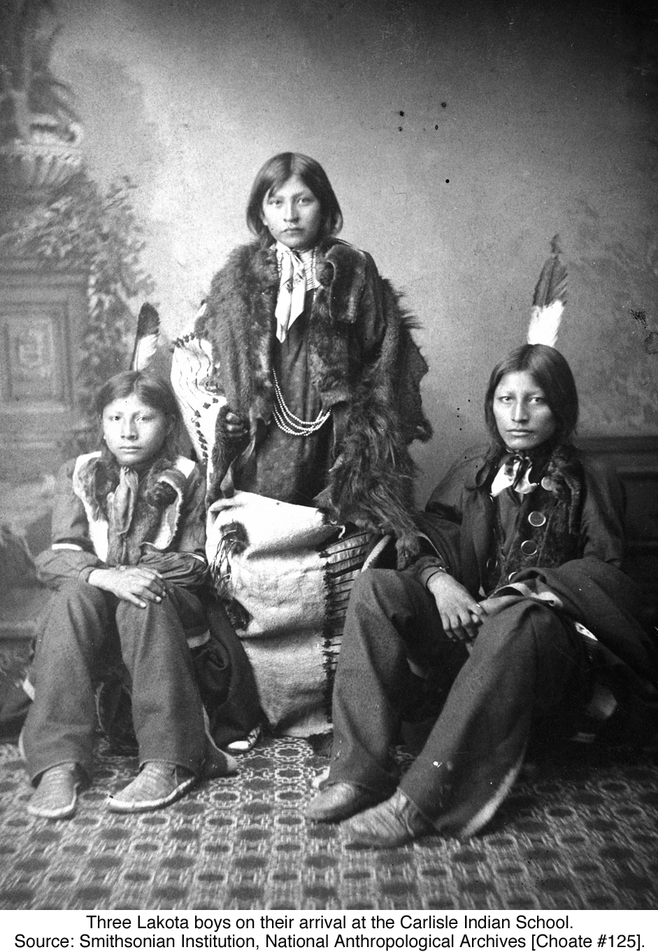
Two Photos, Many Stories
William Friedheim, Borough of Manhattan Community College
Historian William Friedheim uses before and after photographs of Lakota students taken at the Carlisle Indian School to raise issues about Native American identity and assimilation, and demonstrates how examining photographs as primary documents, combined with additional primary sources, shows students how use of evidence creates historical meaning.
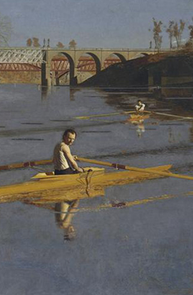
Thomas Eakins, The Champion Single Sculls, 1871
Ian Gordon, National University of Singapore
In this essay, historian Ian Gordon describes how he uses Thomas Eakins’s painting The Champion Single Sculls to explore America’s cultural and economic transition to modernity in the late-nineteenth century.
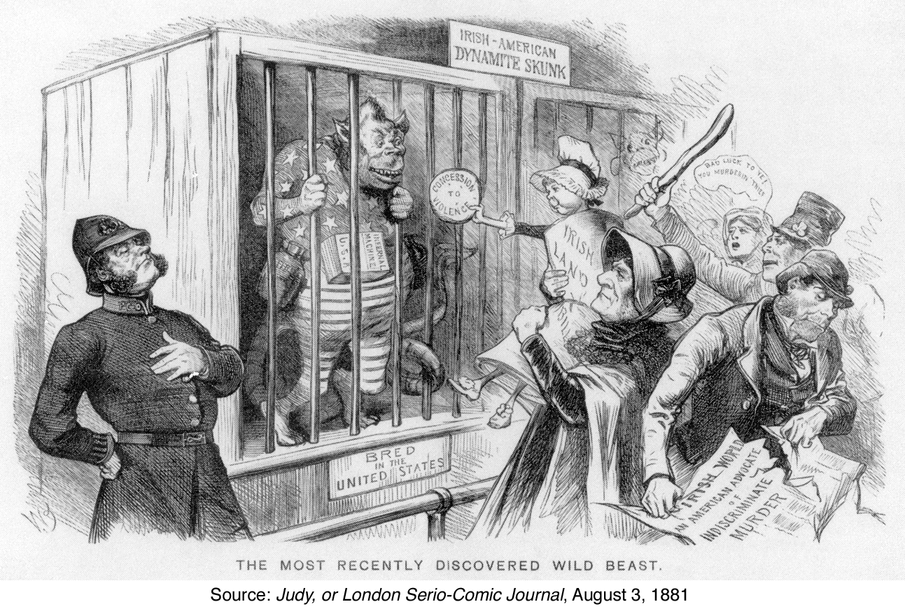
Irish Immigrant Stereotypes and American Racism
Kevin Kenny, Boston College
In this essay, Kevin Kenny examines a British political cartoon to raise questions about the transatlantic nature of anti-Irish prejudice and its relationship to the history of racism in America.
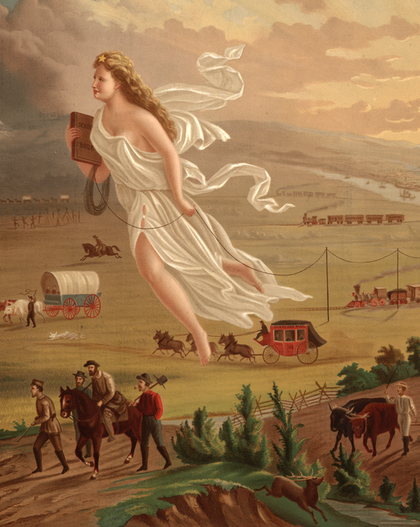
John Gast, American Progress, 1872
Martha A. Sandweiss, Amherst College
Historian Martha A. Sandweiss demonstrates how John Gast’s 1872 painting, which was widely disseminated as a commercial color print, conveys a range of ideas about the frontier in nineteenth-century America.
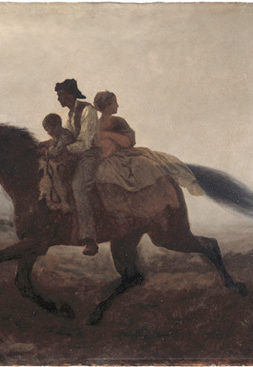
Eastman Johnson, A Ride for Liberty—The Fugitive Slaves, c. 1862
Donna Thompson Ray, The Graduate Center, City University of New York
Eastman Johnson’s painting of fugitive slaves helps address ways to teach a pivotal question in U.S. history: Did Lincoln free the slaves—or did the slaves free themselves?
